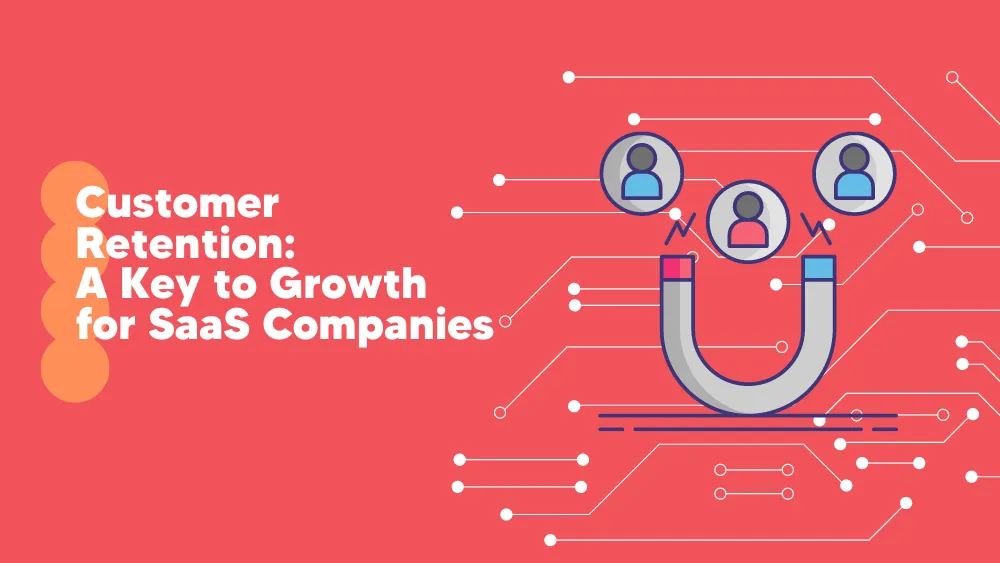Understanding and improving the various phases a client encounters with your business, from their initial interaction to becoming a devoted, repeat customer, is the main goal of customer lifecycle management, or CLM. This is essential in the ever-evolving SaaS industry to maintain client satisfaction and expand your company.
You can strengthen bonds with customers, increase their loyalty, and promote repeat business by concentrating on each step of the customer journey.
This article will outline the key CLM phases, offer management advice, and highlight useful resources. By streamlining the customer journey, you can increase customer retention and business growth.
What is Customer Lifecycle Management?
Recognizing and monitoring a customer’s connection with your company is called customer lifecycle management (CRM). It involves tracking and assessing every phase of the journey to determine how well your company is doing at specific intervals.
Based on the customer’s current stage of the journey, CLM assists firms in developing customized strategies for them.
By understanding what consumers need at each step, whether they are just learning about your product or are thinking about renewing their subscription, you can provide tailored support, increase happiness, and create more enduring relationships.
Simply put, consumer satisfaction and corporate success largely depend on CLM.
Why Customer Lifecycle Management Matters for SaaS Businesses
Customer Lifecycle Management (CLM) is crucial for SaaS companies because customer retention matters as much, if not more, than customer acquisition.In a subscription-based business model, enduring connections are essential to success because a customer’s value increases over time. Since current customers account for more than 60% of a business’s income on average, maintaining their engagement and satisfaction is essential.
CLM helps businesses manage this by identifying pain points and improving the user experience at every customer journey stage. Analytics and data are crucial instruments in this process. By monitoring consumer behavior, businesses may develop tailored tactics, provide prompt help, and eventually boost retention.
Customer Lifecycle Journey
The course that clients take while interacting with your company over time is known as the customer lifecycle journey. Every encounter and touchpoint customers have with your business is included, and every phase of this trip influences how they feel about it all in the end.
You can more accurately predict your customers’ demands at various stages of the customer lifecycle journey and provide the appropriate support or benefits to keep them interested.
In the following sections, we’ll break down each stage of this journey – from awareness to advocacy – and examine how you can handle each one to give your clients a seamless and fulfilling experience.
Key Customer Lifecycle Stages
-
Awareness
Potential clients initially learn about your product or service during the awareness stage. Organic search, social networking, or advertising could all contribute to this. By responding to a need or issue, they intend to become visible to them.
Paid ads, search engine optimization (SEO), and informational content marketing are all effective strategies. At this point, success means that clients are interested enough to learn more about what you offer.
-
Acquisition
Prospects who actively express interest in your business as leads transition into the acquisition stage. This could be by signing up for a newsletter, visiting your website, or attending a product demo.
Your main priorities at this point should be keeping these leads interested and offering them information. Tools like email marketing, live chat, and special offers can help keep customers interested and bring them closer to purchasing.
-
Engagement
The consumer interaction stage starts after they register or make a transaction. At this point, the focus switches to ensuring they engage with your brand and use your product actively. This could include onboarding processes, tutorials, or personalized support for SaaS companies.
To help users get the most out of your product, you can maintain good communication by using customer relationship management (CRM) solutions and automated email campaigns.
-
Retention
Retention is all about keeping customers satisfied and reducing churn. This stage is crucial because it is significantly more economical to keep current consumers than to acquire new ones.
Customer engagement techniques include tailored follow-ups, loyalty plans, and regular updates on new features and products. Analytics and customer feedback surveys are two examples of tools that can be used to find possible problems before they cause turnover.
-
Advocacy and Loyalty
The last phase involves converting satisfied consumers into advocates for your brand. Positive customer experiences increase the likelihood of referring people to your product, aiding your word-of-mouth marketing efforts.
To encourage this kind of advocacy, you can use referral programs, prizes for returning consumers, or building a brand community. Promoting and utilizing client loyalty can be effectively achieved through social media engagement and review platforms.
By understanding and implementing these customer lifecycle stages at each point, your business can build strong, long-term relationships and foster a more loyal customer base.
How to Optimize Customer Lifecycle Management at Every Stage
Building enduring relationships and accelerating business success requires optimizing every stage of the client lifecycle. The following are some doable tactics to improve Customer Lifecycle Management at every level:
Capturing Attention
Knowing your target audience and how they spend their time is vital for maximizing the awareness stage. Use social media campaigns, SEO, and targeted advertising to get the right people to notice your product.Post insightful content on your blog, videos, and social media to establish your company as a trustworthy resource. Metrics like reviews, click-through rates, and website visits can be tracked to help you improve your approach.
Tips:
- Run targeted ads based on customer interests and behavior.
- Create educational content to address customer pain points.
- Analyze your campaigns to see which ones generate the most interaction.
Turning Interest into Action
The objective at the customer acquisition stage is to convert prospects into paying clients. Make things easier for prospective buyers by offering self-service resources such as FAQs and how-to guides so they can quickly learn about your product. Provide support channels like phone, email, and live chat so that clients can quickly contact you with any questions.
Tips:- Offer live assistance options so that concerns can be handled immediately.
- Provide a smooth, user-friendly registration or purchasing experience.
- Retargeting advertising can be used to attract visitors who were previously indifferent to return.
Keeping Customers Active
Engagement is about keeping customers and ensuring they get the most out of your product. Personalize client interactions with in-app messages, onboarding instructions, and targeted emails. CRM technologies enable you to monitor client patterns of use and promptly give helpful advice or reminders.
Tips:- Send out customized emails with advice and rewards to use the product.
- Establish onboarding procedures that walk users through the main features.
- Use consumer interaction data to enhance engagement tactics.
Building Long-Term Relationships
Retention is essential for maintaining a solid customer base and lowering loss. To ensure client satisfaction, provide personalized follow-ups, special offers, or loyalty benefits.
When you frequently send out updates on new products or services, customers are kept interested and reminded of the value you provide. To avoid attrition, pay attention to what customers have to say and act fast to resolve any problems.
Keep in mind that 74% of consumers think that feeling understood and valued increases brand loyalty, therefore demonstrating your concern has a significant impact.Tips:
- Automate email check-ins to get feedback and show you care.
- Reward devoted clients with early access to new products or special discounts.
- Track consumer behavior and get in touch with unhappy users to get them back.
Turning Customers into Ambassadors
The last phase involves converting satisfied clients into loyal advocates who spread the word about your company. Promote client testimonials and recommendations via referral programs or special offers for endorsing your merchandise. Reward devoted clients with limited-time offers, tailored gifts, or exclusive content.
Tips:- Establish a referral scheme that rewards users for introducing new users.
- Urge clients to post reviews and stories from their experiences on social media.
- Provide benefits, like coupons or customized presents, to make them feel appreciated.
Effective Client Lifecycle Strategies for Retention and Loyalty
Retaining clients and fostering brand loyalty are essential for success throughout the client lifecycle. Here are a few key strategies to improve retention and build loyalty:
Tools for Customer Lifecycle Management
Customer Relationship Management (CRM) Systems
CRM systems are the foundation of efficient client lifecycle management. They support companies in managing connections, tracking interactions, and storing and organizing customer data. With a CRM, you can see every aspect of your customer, customize communication, monitor sales progress, and ensure no important touchpoint is missed.
Popular CRM ToolsMarketing Automation Platforms
Platforms for marketing automation let companies automate time-consuming tasks like maintaining social network posts, sending emails, and managing advertising campaigns. These platforms are particularly helpful for engaging current customers and nurturing prospects appropriately, depending on their behavior or lifecycle stage.
Popular Marketing Automation ToolsData Analytics Tools
Understanding how customers engage with your business at every level depends on data. Analytics tools monitor customer involvement, marketing performance, and website behavior.
This data helps companies make better decisions and optimize their strategies by highlighting what’s effective and what needs improvement.
Popular Analytics ToolsConclusion
Customer lifecycle management is essential for establishing lasting bonds with clients, raising customer satisfaction levels, and driving business growth. Businesses may convert prospects into devoted, long-term clients by understanding and maximizing each stage, from awareness to loyalty.
Personalizing experiences, offering excellent assistance, and utilizing appropriate tools, such as marketing automation and CRM systems, may make this process more successful and efficient.
You may increase customer retention and obtain loyal customers by putting the methods and technologies covered into practice. This will lead to long-term success and growth for your company.






